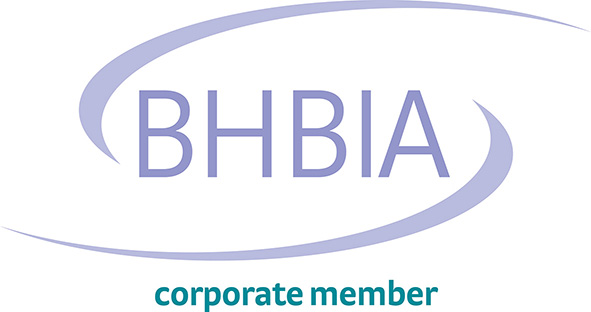Market Research Glossary
Market Research Glossary
There are currently 63 names in this directory beginning with the letter I.
ICC/ESOMAR International Code on Market and Social Research
The code of conduct of ESOMAR and sets out the rights and responsibilities of those involved in marketing and social research.
Ideal Population
The group about whom the researcher wants to know more and from whom a sample will be drawn.
Identification Information
lists details such as the name and address of participants in a market research project whereby they can be identified.
Immigration
Immigration is the international movement of people to a destination country of which they are not natives or where they do not possess citizenship in order to settle as permanent residents or naturalized citizens.
Implicit Alternatives
are alternatives in a question that are not expressed openly. Such alternatives may have lower chance of being selected and therefore the data may be biased.
Implicit Assumption
It is when all respondents are assumed to have the same level of knowledge on a subject. Questions with implicit assumptions can lead to instrument error and/or respondent error.
Implied Population
It is the population as suggested by the sample, ie it is that part of the population of interest that was available for the research. When a convenience sample is used or where there is sampling frame error, the implied population could be significantly different to the population of interest (or the ideal population).
Imputed Response
It is a substitute for a missing response that is based on the pattern of other responses from a survey respondent
In-Depth Interview
It is a type of qualitative research involving an unstructured personal interview with a single respondent, conducted by a highly skilled interviewer. The purpose of in-depth interviews is to understand the underlying motivations, beliefs, attitudes and feelings of respondents on a particular subject.
In-Home Interview
It is where participants are asked survey questions face-to-face in their own homes.
In-House Recruiting
a company conducts a study within its own business structure and internal resources.
In-House Research
It is research that is conducted by the staff in a client company (rather than by an agency).
Inability Error
It is where respondents are unable to answer a particular question. This may be because they have not understood the question, they do not have the information the question requires, they cannot remember the circumstances to which the question refers or they are unable to articulate certain types of responses.
Incentive
It is a reward given to participants or businesses for taking the time and trouble to co-operate in a marketing research study
Income
Income is money what an individual or business receives in exchange for providing labor, producing a good or service, or through investing capital.
Independent Samples
are samples that are not linked experimentally and the measurement of one sample has no effect on the others.
Independent Variable
It is a variable that exerts some influence on another (dependent) variable. Research experiments usually involve some manipulation of independent variables and measurement of dependent variables to investigate the relationship between them
Index
It is a variable that is determined by dividing one measurement by another, and it is usually expressed as a percentage. Indices can be used to show variations over time, by comparing subsequent measurements of a variable with an initial measurement (an index of 100 indicates no change). Indices can also show the relative incidence of a particular characteristic in two samples, by dividing the percentage of one sample by the other, indices of 120 and over or 80 and below generally indicate above-average and below-average skews respectively.
Indirect Approach
It is one where the true purpose of a research project is disguised. Indirect approaches are used when revealing the true purpose of the research would bias the responses given by participants.
Indirect Observation
It is an observation technique where some record of past behaviour is used to deduce what happened during an event, eg looking at packaging usage in a fast food restaurant to understand what flavoured drinks sell the most.
Indirect Question
It is a question to research participants that asks them to consider the behaviour of other people instead of their own. The purpose of indirect questions is to avoid bias caused by social group norms and the best light phenomenon.
Inductive Research
Inductive research is a bottom-up approach that moves from the specific to the general.
Information
It involves the analysis and interpretation of data to describe something about a market.
Informed Consent
It is the principle that researchers should try to avoid both uninformed and misinformed participation by subjects in research.
Initial Refusal
It occurs when a respondent refuses to participate in a survey at the interviewer's initial introductory statement.
Instrument Error
It is a type of non-sampling error caused by the survey instrument (or questionnaire) itself, such as unclear wording, asking respondents for information they are unable to supply or the instrument being changed in some way during the course of the research.
Intended Sample
It is the ideal sample for a particular research project (which may be different to the resulting sample).
Interaction Effect
It is the effect of all the factors working together, which is greater than the sum of the separate effects.
Interactive Advertising Bureau (IAB)
The Interactive Advertising Bureau (IAB) empowers the media and marketing industries to thrive in the digital economy.
Interactive Interviewing
Interactive interviewing is a collaborative communication process occurring between researchers and respondents in small group settings.
Interactive Testing Effect
Pre-test manipulation interaction bias is present when the pre-testing in an experiment heightens participants’ sensitivity and makes them behave in a systematically different way during the experiment that prevents the results being generalised to a population of interest (i.e. it reduces external validity).
Interactive Voice Response (IVR) Research
Interactive Voice Response (IVR) is a computer-based technology that enables computer systems to detect voice and touch tones using landlines or mobile phones.
Intercept
A qualitative market research method where consumers are stopped whilst interacting with a brand – whether that be in a store, shopping centre or online - and then interviewed. The timing of the 'intercept' depends on the research objectives.
Intercept Interview
It is a type of central location interviewing where respondents are approached (or intercepted) at random in high traffic locations such as grocery stores or shopping malls. The main part of the interview can take place either on the mall floor or in another location (usually nearby).
Interdependence Techniques
are types of multivariate analysis techniques that are used where no distinction is made as to which variables are dependent or independent.
Interlocking Quotas
are the numbers of interviews required with participants having several pre-defined characteristics such as age, life-cycle stage and income level.
Internal Consistency Reliability
Internal consistency reliability estimates how much total test scores would vary if slightly different items were used. Researchers usually want to measure constructs rather than particular items.
Internal Database
Internal database is any collection of business data compiled using the internal networks. Internal databases have data regarding information on market and consumer behavior in an electronic form.
Internal Marketing
internal marketing is the promotion of a company's vision, goals, culture, and mission statement within the organization.
Internal Secondary Data
are data that have already been generated and/or collected by a business during its normal course of activity.
Internal Validity
It is a measure of the accuracy of an experiment in terms of the degree to which changes in the dependent variable can be attributed to manipulations of the independent variable.
Interquartile Range
It is a measure of variability and it is the range between the upper and lower quartiles (i.e. the middle 50% of a distribution) and it is equal to the difference between the 75th and the 25th percentile.
Interrupted Time-Series Design
It is a method of statistical analysis involving tracking a long-term period before and after a point of intervention to assess the intervention's effects.
Interval
Taking a given number of units equally selected over the full population of study. The nth number interval is derived by dividing the total number of units by the sample number desired.
Interval Estimates
Interval estimates aim at estimating a parameter using a range of values rather than a single number.
Interval Scale
It is a scale where equal intervals in the scale correspond to equal changes in the characteristic being measured, eg temperature scales (Celsius/Fahrenheit). Differences between objects can be analysed statistically (which is not possible with nominal or ordinal scales).
Interviewee
The person who is interviewed. No matter what type of survey is being conducted, the person being interviewed is always called the respondent.
Interviewer
It is a term used in a general sense relating to the process of drawing information from a respondent.
Interviewer Bias
It is a distortion of response related to the person questioning informants in research. The interviewer's expectations or opinions may interfere with their objectivity or interviewees may react differently to their personality or social background.
Interviewer Error
It is a type of non-sampling error caused by mistakes made by the interviewer. These may include influencing the respondent in some way, asking questions in the wrong order, or using slightly different phrasing (or tone of voice) than other interviewers. It can include intentional errors such as cheating and fraudulent data entry.
Interviewing Service
The enterprise or agency that supplies trained interviewers for clients and receives payment for services delivered. The service is responsible for hiring and training of interviewers, executing a client's job exactly as specified, editing, and validating each interviewer's completed assignment.
Intra-Cultural Analysis
It is the breakdown of data into individual countries (or cultural units) and analysis within each individual country.
Inverted Funnel Approach
It is a way of ordering questions in a questionnaire where the specific questions are asked before the general questions. The approach can be useful where respondents do not have strong feelings or a general view on a subject.
Invisible Processing
'Invisible processing' occurs when you obtain personal data from somewhere other than directly from the individual themselves, and you don't provide them with the privacy information required by Article 14.



